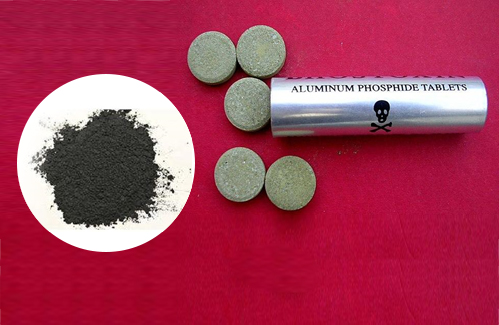- Folder Technical News
- Views 3065
- Last Updated 07/08/2024
Foodborne illness caused by Staphylococcus aureus is a gastrointestinal disease caused by toxins produced by this bacterium. This bacterial strain and the toxins it produces are common agents causing widespread food poisoning cases in Vietnam as well as globally. Let's dive deeper into this risk with the experts from the National Institute of Food Control.
Staphylococcus aureus - A Widespread Pathogen

Figure 1. Staphylococcus aureus can proliferate in contaminated food and produce toxins that cause food poisoning
(https://medlatec.vn/tin-tuc/nhiem-khuan-tu-cau-vang-nguy-hiem-ra-sao-nhan-biet-cach-nao-s195-n20927)
Staphylococcus aureus is a Gram-positive, spherical bacterium that often forms clusters. This type of bacterium is commonly found in various food sources such as meat, fish, eggs, milk and dairy products, as well as in prepared dishes made from these ingredients. The main sources of Staphylococcus aureus contamination are unhygienic food handlers, processors or storage, contaminated equipment and contact surfaces, as well as improper temperature control during preparation and storage. Staphylococcus aureus can proliferate in contaminated food and produce toxins that cause foodborne illness.
Staphylococcal Toxins - "The Dangerous Killer"

Figure 2. Staphylococcus aureus secretes a variety of toxins and enzymes
(https://journals.asm.org/doi/10.1128/microbiolspec.gpp3-0039-2018)
The toxins produced by Staphylococcus aureus, such as enterotoxins (over 20 types), leucocidins, exfoliatins, etc., are the main causes of the typical symptoms of food poisoning. Each type of toxin has a different pathogenic mechanism, which will be discussed in detail in subsequent articles. Staphylococcal toxins are very heat-resistant and not easily destroyed by normal cooking temperatures. While cooking can kill Staphylococcus aureus, it cannot inactivate the toxins in the food. This is why it is crucial to prevent food contamination during food preparation and storage, especially for leftover food that will be reused the next day.
According to the Centers for Disease Control and Prevention in the United States, 1 in 4 people carry Staphylococcus aureus asymptomatically on their skin and in their nose. While healthy carriers may not get sick, the bacteria can spread and produce toxins that can cause foodborne illness. In Vietnam, according to the Ho Chi Minh City Food Safety Management Authority, from 2010 to the end of 2018, there were 54 food poisoning incidents, of which 14 were caused by Staphylococcus aureus. In 2023, there were 76 preschool students in Nghe An province affected by food poisoning due to yogurt contaminated with Staphylococcus aureus, and more than 70 elementary school students in Hanoi were affected by food poisoning after consuming chicken dishes containing this bacteria.
Symptoms of Staphylococcus aureus food poisoning:
Symptoms typically begin suddenly within 30 minutes to 8 hours after consuming the contaminated food. They last for 24 hours or less. The most common symptoms area as follow:
- Nausea
- Vomiting
- Abdominal cramps
- Diarrhea
Diagnosis:
Laboratory tests can detect Staphylococcus aureus toxins in stool, vomit, and food. However, these tests are usually not ordered unless during an outbreak. Doctors can diagnose Staphylococcus aureus food poisoning based on the symptoms and the timeline of when they appear.
The National Institute for Food Control regularly conducts testing for Staphylococcus aureus and its toxin in food service samples or food poisoning cases. With top-level food testing capabilities in Vietnam, the laboratory has modern equipment and an experienced staff of experts. The National Institute for Food Control is committed to providing customers the best food testing services with the principles of: Honesty, dedication, accuracy, effectiveness, and reputation.
Prevention
To prevent Staphylococcus aureus infection and its toxin, it is necessary to:
- Always wash hands before preparing or serving food.
- Staphylococcus aureus can grow rapidly in food kept at room temperature or in the "danger zone" from 4 to 60°C, so food should be kept away from the "danger zone": After cooking food, it should not be left at room temperature before eating, but rather reheated to 60°C or above or kept chilled below 4°C.
- Perishable foods that have been in the "danger zone" should be cooled within 2 hours (or 1 hour if the food was at 32°C or hotter).
Treatment
People have vomiting or diarrhea symptoms should promptly replenish electrolytes to prevent dehydration. If necessary, consult a doctor about anti-nausea or anti-vomiting medications. Antibiotics are not used to treat Staphylococcus food poisoning as they are ineffective against the toxin.
Staphylococcus and its toxin remain a major threat to public health. Therefore, it is extremely important to raise awareness of prevention and strengthen monitoring and research to find effective preventive measures.
Headquarters: Science and Technology Service Center - National Institute for Food Control
- Address: 65 Pham Than Duat, Mai Dich Ward, Cau Giay District, Hanoi
Hotline: 0084 85 929 9595
Email: baogia@nifc.gov.vn
- Training: Science and Technology Service Center - National Institute for Food Control
- Address: 65 Pham Than Duat, Mai Dich Ward, Cau Giay District, Hanoi
Hotline: 0084 3226 2251
Email: daotao@nifc.gov.vn
Instrument Calibration
- Mrs. Nguyen Thi Ha Binh
Address: 65 Pham Than Duat, Mai Dich Ward, Cau Giay District, Hanoi
Hotline: 0084 98 8479022
Email: calib@nifc.gov.vn - habinhsp86@gmail.com
Reference Materials, Standards Providing: Science and Technology Service Center - National Institute for Food Control
- Address: 65 Pham Than Duat, Mai Dich Ward, Cau Giay District, Hanoi
Hotline: 0084 3226 2251/0084 983 739 653 (Ms Thuy)
Email: ptp.rm@nifc.gov.vn
Representative office in Ho Chi Minh City
- Address: Tan Cang - Cat Lai Port, Room A102, Gate B Cat Lai Port, No. 1295B Nguyen Thi Dinh Street, Cat Lai Ward,
District 2, Ho Chi Minh City
Phone: 0084 28 37400 888/ Hotline: 0084 918 959 678 (Mr. Nghi)
Email: vpsg.nifc@gmail.com
Representative office in Hai Phong
- Address: No 1, Ngo Quyen, Hai Phong city
Phone: 0084 225 8830316 / Hotline: 0084 983 300 226 (Ms. Thuong)
Email: dothanhthuong226@gmail.com
Phạm Ngọc Hà – The National Institute for Food Control



















